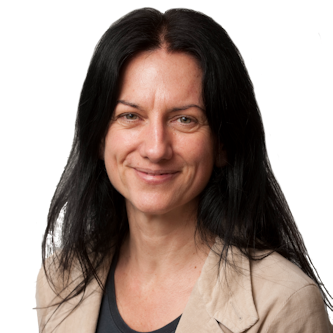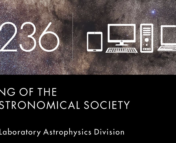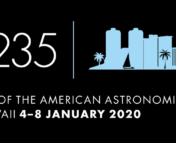In this series of posts, we sit down with a few of the keynote speakers of the 236th AAS meeting to learn more about them and their research. You can see a full schedule of their talks here, and read our other interviews here!
My Chemical Research
Ever since the dawn of humankind, we’ve been curious about our own origins. Where we come from, how life came to be–these are the kinds of deeply fundamental questions that we’ve asked ourselves for generations.

And as Prof. Paola Caselli knows, these are the kinds of questions that astrochemistry aims to answer. Caselli, a Director and Scientific Member at the Max-Planck-Institute for Extraterrestrial Physics in Munich, Germany, will be giving the Laboratory Astrophysics Division (LAD) Plenary Lecture at #AAS236. Her keynote talk will not only describe some of the work her group has been doing, but also review some of the major questions and recent discoveries in the field of astrochemistry.
At its heart, Caselli explains, astrochemistry is all about molecules. “The molecules that we see in space […] give us information about regions where stars and planets are forming.” The spectral lines formed by molecules are able to trace the dynamics of gas clouds, giving us “very detailed information about how material is collected in these regions, which are the future generations of stellar systems like our own.”
Furthermore, the chemistry of molecules in these stellar nurseries are a clue to the origins of life. These molecules are relatively basic compared to what we know here on Earth—to astrochemists a “complex organic molecule” is something with at least 6 atoms, nowhere near the millions or billions of atoms in a strand of DNA—but as Caselli says, the basic chemistry in space is still “the first step toward more complex chemistry that we see on the ground.”
Mixing things up
The name “astrochemistry” might make it seem like just another subfield of astronomy, but astrochemistry is much more than that.
While most astronomy isn’t experimental—unfortunately, it’s a little difficult to test stars or galaxies in laboratory conditions—astrochemistry relies heavily on lab work. As Caselli says, “it is within laboratories on Earth that we can actually measure, for example, the frequencies of the molecules that we see in space to high precision.” This kind of high precision laboratory work is crucial to identifying molecular lines and bands in astrophysical spectra.
Astrochemistry is a truly interdisciplinary area, connecting astronomers who work in disparate subfields like exoplanet atmospheres and protoplanetary disks. It also spans a dizzying variety of fields outside astronomy—everything from solid-state physics to organic chemistry to geochemistry. Caselli’s own research group now includes theorists, observers, and experimentalists, all from different backgrounds in chemistry, physics, and astronomy. “It’s incredible how much you learn,” she says, “just talking to people every day.”
The universal test kitchen
One major goal in astrochemistry is to trace the history of certain molecules from star-forming gas clouds to actual planetary systems. We think all the raw ingredients for life are already in the early phases of star-forming clouds, Caselli says—we just need to figure out how these ingredients “get cooked” to create life.
These raw ingredients, it turns out, might start out in what Caselli describes as “tiny little snowballs”: dust grains enshrouded in hundreds of layers of ice molecules. These dust grains are located in “prestellar cores,” or clumps of cold dense gas clumps that eventually form stars. When stars form with their accompanying planetary disks, some of the material in the dust grains’ icy shells might end up in planets.
Among other things, Caselli’s group works to understand both the physics and the chemistry that might be happening in these tiny snowballs. For example, they predict that cosmic rays (energetic particles, some of which might be produced by young stars) can impact dust grains and cause chemical reactions in the ice. But what kinds of reactions happen? How many of the resulting molecules will actually make it to planets? These are questions that astrochemists are still working to answer using advanced millimeter/sub-mm arrays like ALMA and NOEMA—and perhaps soon, using next-generation instruments like JWST.
And this is only one of the many research directions in astrochemistry! Caselli laughs. “There will be a lot to do for students in the future!” she says.
“A really great adventure”
Caselli has long been entranced by the big questions that astrochemistry tries to answer, she says. “When I was 13 years old, I remember my teacher gave me a book to read. She knew that I was kind of interested in astronomy, but it was not clear yet what I really wanted to do [because] I also loved art. I wanted to paint—I was actually a pretty good painter,” Caselli smiles.
The book, it turns out, was The Black Cloud, a science fiction novel by well-known British astrophysicist Fred Hoyle. “It was about a dark cloud coming between a star and us. They were talking about the composition of this cloud, there were some molecules inside,” Caselli recalls, “and at the end, it was a living organism. I was so astounded.”
This sparked her interest in the origins of molecules, and during the last two years of her undergraduate studies, Caselli began studying chemistry alongside astronomy. However, when she finished her master’s thesis, “there was nobody in Italy who worked on astrochemistry.” So Caselli sent two emails to professors in the United States, and–to her surprise–got replies. She ended up coming to the US to do research with both professors. “This is how it started,” Caselli says, and she now tells her own students to “not hesitate to write to people.”
Her time as a student, she says, “was a really great adventure for me.” She laughs. “I didn’t understand anything when I arrived in Ohio, oh my gosh, my English was so bad, but still I was so happy to work on something that I always wanted to work on.”
Today, Caselli is just as excited about her work. “I know it’s still very complicated sometimes, there are lots of things you have to go through, but every time I think about the big picture — that we were also in these [gas] clouds some billions of years ago — it always makes me feel so good,” she beams. “This is great work to do.”
If you want to learn more about this great work, come check out Prof. Caselli’s plenary talk at 10AM EDT on Tuesday, June 2 at #AAS236!


